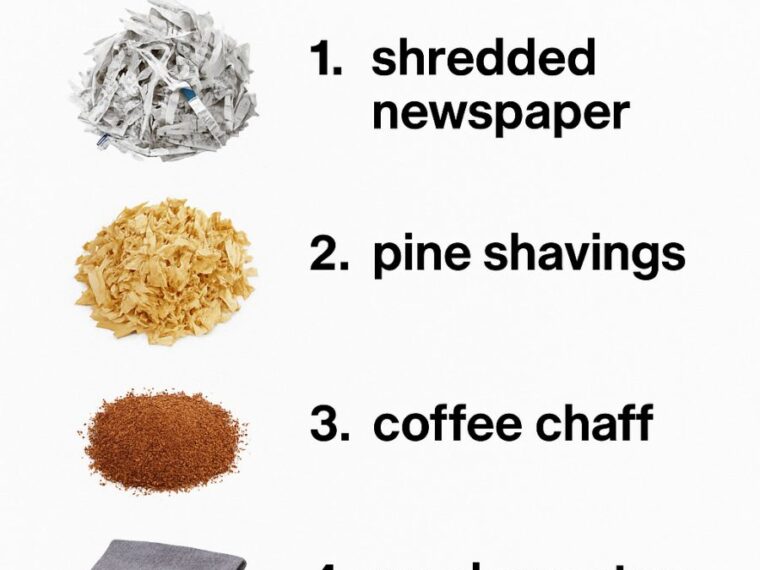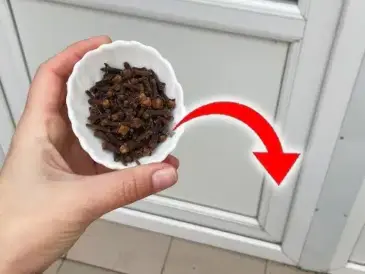As winter approaches, gardeners often look for ways to protect their plants from harsh weather while also promoting healthy soil. Mulching is a technique that can achieve both of these goals by insulating plants and enriching the soil. While most people think of traditional mulch materials like wood chips or straw, there are several unexpected items that can be used to mulch your garden effectively.
In this article, we’ll explore ten unconventional items you can safely use as mulch this winter. These items are not only eco-friendly alternatives but also provide unique benefits to your garden. By repurposing these materials, you can save money and reduce waste, all while creating a thriving garden environment.
1. Shredded Newspaper: A Surprising Mulch Alternative
Shredded newspaper is an excellent mulch alternative due to its availability and ability to retain moisture. When layered about 2 to 3 inches thick, it can effectively suppress weeds and keep your soil warm during the colder months. Be sure to use black-and-white pages rather than colored ones, as the inks used can sometimes contain harmful chemicals.
To apply shredded newspaper as mulch, simply tear or cut the paper into strips and spread it evenly around your plants. Water the newspaper lightly to help it stay in place and prevent it from blowing away. Over time, the newspaper will decompose, adding organic matter to the soil.
2. Pine Shavings: Not Just for Animal Bedding
Pine shavings, commonly used as bedding for animals, can also serve as an effective mulch for your garden. They are particularly useful for acid-loving plants such as blueberries and azaleas, as pine shavings slightly lower the soil pH. Spread a layer of about 2 inches around your plants, ensuring that the shavings do not touch the stems to prevent rot.
While pine shavings are beneficial, they can deplete nitrogen levels in the soil as they decompose. To counteract this, consider adding a nitrogen-rich fertilizer or compost before applying the shavings.
3. Coffee Chaff: Brewed Grounds’ Best Friend
Coffee chaff, the thin skin that comes off coffee beans during roasting, is a byproduct often overlooked. However, it makes an excellent mulch that is lightweight and easy to spread. A 1- to 2-inch layer of coffee chaff can help retain moisture and improve soil texture.
Rich in nitrogen, coffee chaff can provide additional nutrients to the soil as it breaks down. Be sure to source your coffee chaff from local roasters, as they often have plenty to give away for free.
4. Wool Sweaters Cut Into Strips: Cozy Mulch for Your Garden
Old wool sweaters can be repurposed into a cozy mulch for your garden. Wool is a natural insulator and can help retain soil warmth during the cold winter months. Cut the sweaters into strips and lay them around the base of your plants. A 1-inch layer is usually sufficient to provide protection.
As wool decomposes slowly, it will gradually release nitrogen into the soil, benefiting plant growth. Ensure the sweaters are 100% wool to avoid introducing synthetic fibers into your garden.
5. Eggshells: Calcium-Rich Mulch
Eggshells are a fantastic mulch option, providing a slow-release source of calcium to the soil. Crush the shells into small pieces and spread them around your plants. A layer about 1/4 inch thick is sufficient to provide benefits without overwhelming the soil.
In addition to providing nutrients, eggshells can deter certain pests, such as slugs and snails, due to their sharp edges. Consistently adding eggshells to your garden can improve soil structure over time.
6. Hair Clippings: A Unique Mulch with Benefits
Hair clippings, whether from humans or pets, can be used as mulch to help retain moisture and provide nutrients to the soil. Spread a thin layer, about 1/4 inch thick, around your plants, and gently mix it with the topsoil to prevent it from blowing away.
Rich in nitrogen, hair clippings decompose slowly, offering a steady supply of nutrients. They can also deter deer and rabbits due to the human scent, providing an added layer of protection for your garden.
7. Wine Corks: Repurposing for Mulching
Wine corks, typically made from natural cork, can be chopped into small pieces and used as mulch. Spread a 2-inch layer around your garden to help retain soil moisture and suppress weeds.
Using wine corks as mulch is an eco-friendly way to recycle this material, which is biodegradable and will break down over time, enriching the soil. Be sure to use only natural corks, as synthetic ones do not decompose.
8. Cardboard: The Eco-Friendly Weed Barrier
Cardboard is an excellent material for mulching, especially when used as a weed barrier. Lay sheets of cardboard over the soil, overlapping the edges to prevent weeds from growing through. Cover with a 2- to 3-inch layer of organic mulch, such as straw or grass clippings, to weigh it down.
Cardboard breaks down slowly, improving soil health by adding organic matter. Ensure all tape and labels are removed to avoid introducing plastics into your garden.
9. Natural Jute or Burlap: Biodegradable Mulching Option
Natural jute or burlap can be used as a biodegradable mulch to protect your plants from harsh winter conditions. Lay the material over the soil and secure it with landscape staples to keep it in place.
As jute and burlap decompose, they improve soil structure and fertility. This material is particularly useful for erosion control on slopes or in areas with heavy rainfall.
10. Fallen Leaves: Nature’s Free Mulch
Fallen leaves are one of the most accessible and effective mulch materials available. They provide a natural blanket for your garden, insulating plant roots and suppressing weeds. A layer of 3 to 4 inches is ideal for most gardens.
Chop or shred the leaves before applying to speed up decomposition and prevent matting. As they break down, leaves add valuable organic matter to the soil, enhancing its fertility and structure.
11. Sawdust: The Fine Mulch for Acid-Loving Plants
Sawdust can be an excellent mulch, particularly for acid-loving plants. Apply a 1-inch layer around plants like azaleas, rhododendrons, and blueberries, ensuring it does not touch the stems to prevent rot.
Sawdust breaks down slowly and can temporarily deplete nitrogen levels in the soil, so it’s advisable to add a nitrogen supplement or use it alongside a balanced fertilizer. This can help maintain soil health and support plant growth.




